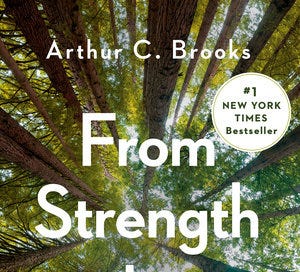This book found me at the right time. It told me some things I’d started to guess, and gave me new ways of thinking about what I want in life. Not surprisingly, some of my friends of the same age have already read this and said the same.
Brooks’ premise is that the skills that bring us success early in our careers are not the same skills we need to have success later in life. Because we’re mortal, and because we begin to decline physically and cognitively far earlier than we’re willing to admit, we shouldn’t expect our craftsmanship and ability to execute to continue to increase. This is the “agony of decline.”
Among many of Brooks’ examples are Johann Sebastian Bach. As a composer in the early 1700s, Bach was known as the most innovative composer of all time. But after decades of writing and performing, Bach’s ability to innovate and execute diminished. His fame waned and he was surpassed in renown by his son CPE Bach, whom even Mozart held in higher esteem. But in the second part of his life, J.S. Bach turned to teaching, and created a volume of musical instruction of such beauty, he was unignorable. Bach’s name is known today not because he was a great composer but because he was a great composer at first and a great teacher later in life.
Brooks describes two types of intelligence: fluid and crystalized. Fluid intelligence is the ability reason, think flexibly, and solve problems, and we are much better at this when we’re younger. Crystalized intelligence is the ability to use a stock of knowledge learned in the past. And this is more useful to us in the second half of life. Crystalized intelligence is how we synthesize what we gain from the first part of our careers and implement it in new ways in the second. This is what Brooks calls “jumping to the second curve.”
Jumping to the second curve is hard to do, because we tend to see our early skills and achievements as part of our identity. We cling to who we think we are, and the accolades that support that view. And this is why it’s so sad to see people in the second half of their life still trying to do exercise the skills and wield the authority they had when they were younger. (There’s a scene in About Schmidt when Jack Nicolson’s character has retired and finds all the client notebooks he bequeathed to his replacement in the trash. This thought came to mind independently, so it was funny to find Brooks referenced it, too.)
There are three things we can do to accelerate our jump and stick the landing. Very briefly (probably too briefly), they are:
Develop our relationships. Humans are interconnected, and this is where crystalized intelligence becomes especially potent
Begin a spiritual journey. Accept being in a transitional state. Lean into gratitude.
Embrace our weaknesses. Loss and decline can be a gift to others.
Brooks sums up his final lesson of jumping to the second curve like this: “Use things. Love people. Worship the divine.” Some of the reviews I’ve read criticize Brooks (a practicing Roman Catholic) for his spiritual, sometimes religious bent. He’s unapologetic about his faith, but but he never sermonizes or leads with it, and as far as I can tell, his wisdom is based in data.
The greatest message of From Strength to Strength is that growth and transformation aren’t just possible, they are essential. I’ve loved my career in advertising. But the idea of making commercials into my 60s sounds tedious. The spectrum of possibilities I see through crystalized intelligence, however, is exhilarating.
READ IT IF: You’re somewhere between 45 and 60. And godspeed.




Loved this book! Should be required reading for professionals in their 40s.